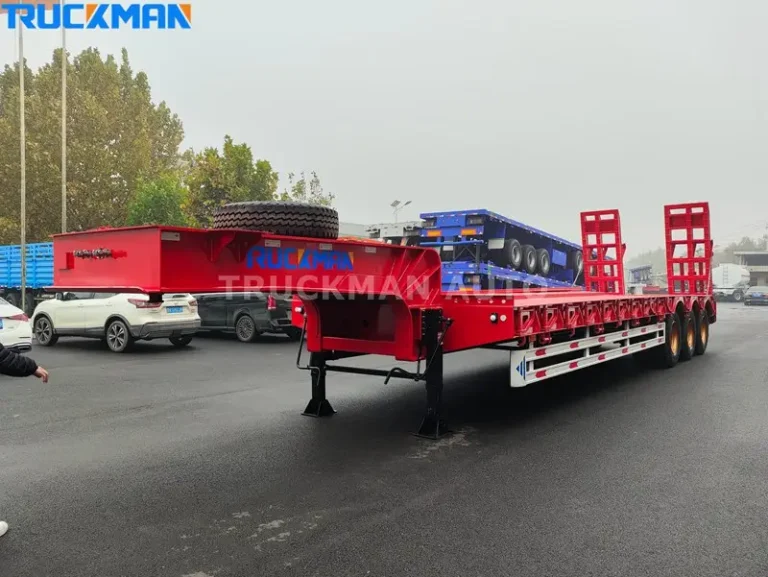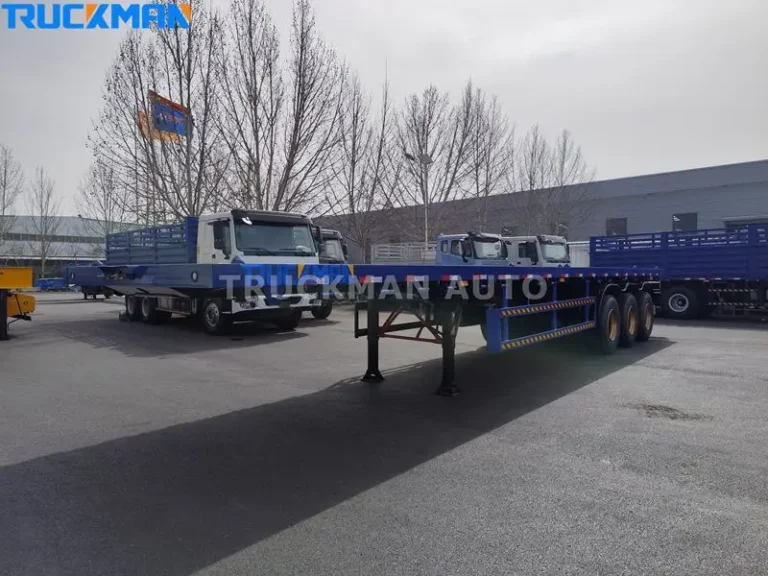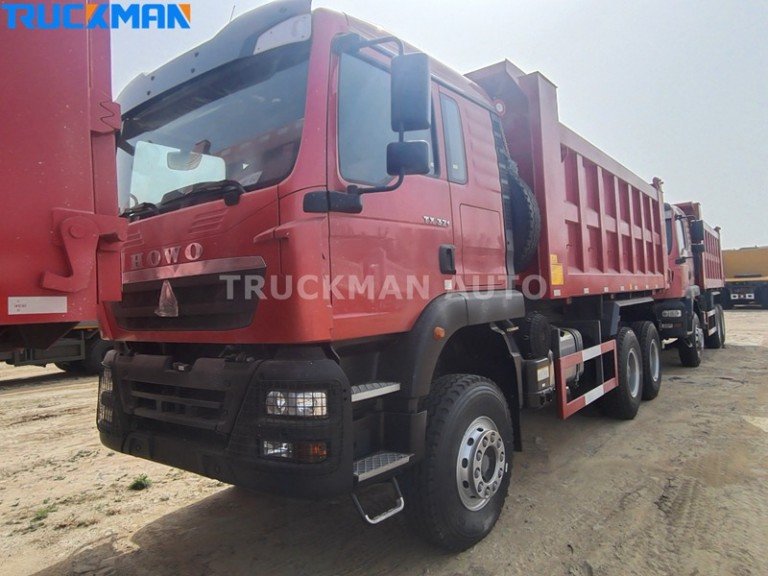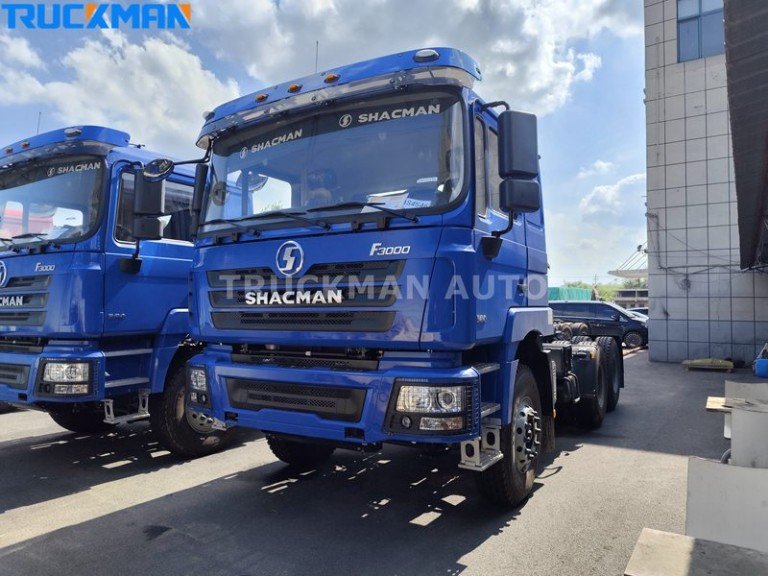Low bed trailers are vital in logistics and transport. They are mainly used to transport large and heavy equipment, including extra-long, wide, and hefty machinery. These trailers are famous for their ultra-low loading platform. It keeps cargo stable and safe during transit. That’s why logistics professionals prefer them. However, deciding when to use a low bed trailer requires a nuanced understanding. It depends on many factors and considerations. In this article, we’ll cover the specific situations and criteria that dictate the need for a low-bed trailer. Providing you with actionable insights to improve your transportation strategy and ensure smooth transportation of oversized cargo.

Table of Contents
Low bed trailer basic knowledge
A low bed trailer is a special trailer for transporting construction machinery and mining equipment. Its lower chassis lowers the cargo’s center of gravity and reduces the risk of accidents. The low-bed trailer has a lower body than other semi-trailers. Its chassis is made of high-strength steel, which can carry heavier loads. A low-bed trailer has more axles than a regular semi-trailer. The more axles you have, the more weight you can carry.
To learn more about low bed semi-trailers, check out the Ultimate Guide to Low Bed Trailers!

Low bed trailer working environment
Transport of heavy or oversized cargo: The Low bed trailer is ideal for this work. Its ultra-low chassis and stable body make moving large objects a breeze. It is also very safe when loading and unloading large construction machinery. Loading and unloading can be done from the rear ladder or the front.
Adapts to different road conditions: The low bed trailer can adapt to different road conditions. This is especially true for unpaved roads, like mountain roads. These harsh roads set demands on cargo size. The low-bed trailer minimizes these demands. But, whether you are on mountain or city roads, you need to check that your cargo is securely tied and handled well.
Special needs and customized transport: You can custom-make low-bed trailers to fit the dimensions of the goods. No matter how long the load is, or how irregular the load is, it can be transported on a low-bed trailer.
How do I know if I need a low-bed trailer?
Deciding if a low bed trailer is needed involves considering size, weight limits, distance, and cost.
Cargo Characteristics: When moving large and heavy cargo, such as mining equipment, industrial machinery, or oversized components like fan blades, a low-bed trailer is essential. Its strong build and low platform are ideal for handling bulky, heavy items. They ensure safe and secure transportation.
Transport Distance: For long-distance transportation of large cargoes, low bed trailers offer distinct advantages. Their stability and reliability make them an excellent choice for journeys. The journeys require traversing varying terrains and road conditions. The vehicles ensure that valuable equipment reaches its destination without compromising safety or integrity
Cost-Benefit Analysis
When considering transporting large equipment and heavy machinery, do a thorough cost-benefit analysis. This is essential to make informed decisions. Let’s compare using a low bed trailer to other transportation methods. We’ll do this to show the financial benefits of choosing a low bed trailer.
Efficiency and Time Savings: Low bed trailers have rear ladders. They make loading and unloading fast and efficient. In contrast, other transportation methods, like flatbed trailers, often need extra crane trucks for unloading. This leads to longer waits and project delays. Low bed trailers are streamlined. They save time, minimize downtime, and keep projects on schedule.
Reduced Labor Costs: Low bed trailers can load and unload efficiently. They need fewer personnel to oversee transport than crane truck rentals. Fewer labor hours are needed. So, businesses can save a lot on manpower and related overhead.
Safety and Risk Mitigation: Low bed trailers are designed to make cargo stable and safe during transit. They reduce the risk of accidents and damage to valuable equipment. In contrast, other ways to travel may be less safe. This is due to the need for more gear and manual handling. By making safety a priority, businesses can reduce the costs of accidents, insurance claims, and equipment repairs.
Cost-Effectiveness: Low bed trailers require an initial investment. But, they become cost-effective in the long term when compared to the total expenses of other transportation methods. Low bed trailers are versatile, durable, and reliable. They have lower maintenance costs and longer service life. This leads to big cost savings over time.
Flexibility and Versatility: Low bed trailers offer unmatched flexibility. They can carry a wide range of cargo. This cargo varies in size, shape, and weight. This adaptability allows businesses to streamline their transport. It lets them optimize resource use. This enhances cost efficiency and competitiveness in the market.
Industries that apply to low bed semi-trailers
Low bed semi-trailers play an important role in several industries:
Construction and engineering: Low bed semi-trailers are widely used in construction and engineering. They are for carrying construction machinery, vehicles, and other heavy equipment. Low bed semi-trailers provide stable and efficient transportation for important equipment. They are used for concrete mixers or cranes. They are critical for construction projects.
Agriculture: Low bed semi-trailers are also common in agriculture. They are used to transport large equipment, like tractors and harvesters. These big farm machines may need to move between farms during fieldwork. Low bed semi-trailers are a reliable way to transport them.
Oil and Gas Industry: The oil and gas industry needs to move heavy equipment. This includes drilling rigs and pipelines. They move this equipment to support exploration and production. Low-bed semi-trailers are stable and can carry heavy loads. This makes them ideal for transporting oil and gas equipment. They ensure it reaches its destination safely.
Aerospace: In aerospace, low bed semi-trailers are common. They are used to transport aircraft parts and other aerospace gear. These parts can have unique shapes and sizes. They need reliable transport to arrive safely at the production line or maintenance facility.
Conclusion
Low bed trailers are vital in transportation. They offer safer, more efficient, and cheaper transport for large equipment and heavy machinery. Their ultra-low loading platforms and great stability make sure transit is safe. They also cut the risk of accidents. The streamlined loading and unloading processes save time and labor costs, making operations more efficient. Additionally, their versatility allows them to accommodate a wide range of cargo sizes and weights. For dependable low bed trailers, contact Truckman Automobile. We offer customized solutions to meet your specific transportation needs, To ensure the smooth movement of your valuable equipment.
FAQ
Yes, low bed semi-trailers are suitable for transporting all types of oversized and extra heavy cargo, including construction machinery, engineering vehicles, agricultural equipment and more.
Transportation costs for low bed semi-trailers vary depending on several factors, including the type of cargo, distance, and destination. Typically, transporting oversized or extra-heavy cargo will cost more than standard cargo.
The maintenance and upkeep of a low bed semi-trailer requires regular inspection of the floor, wheels, and suspension to ensure they are in good working order. It is also important to regularly lubricate key components to ensure smooth transportation.






